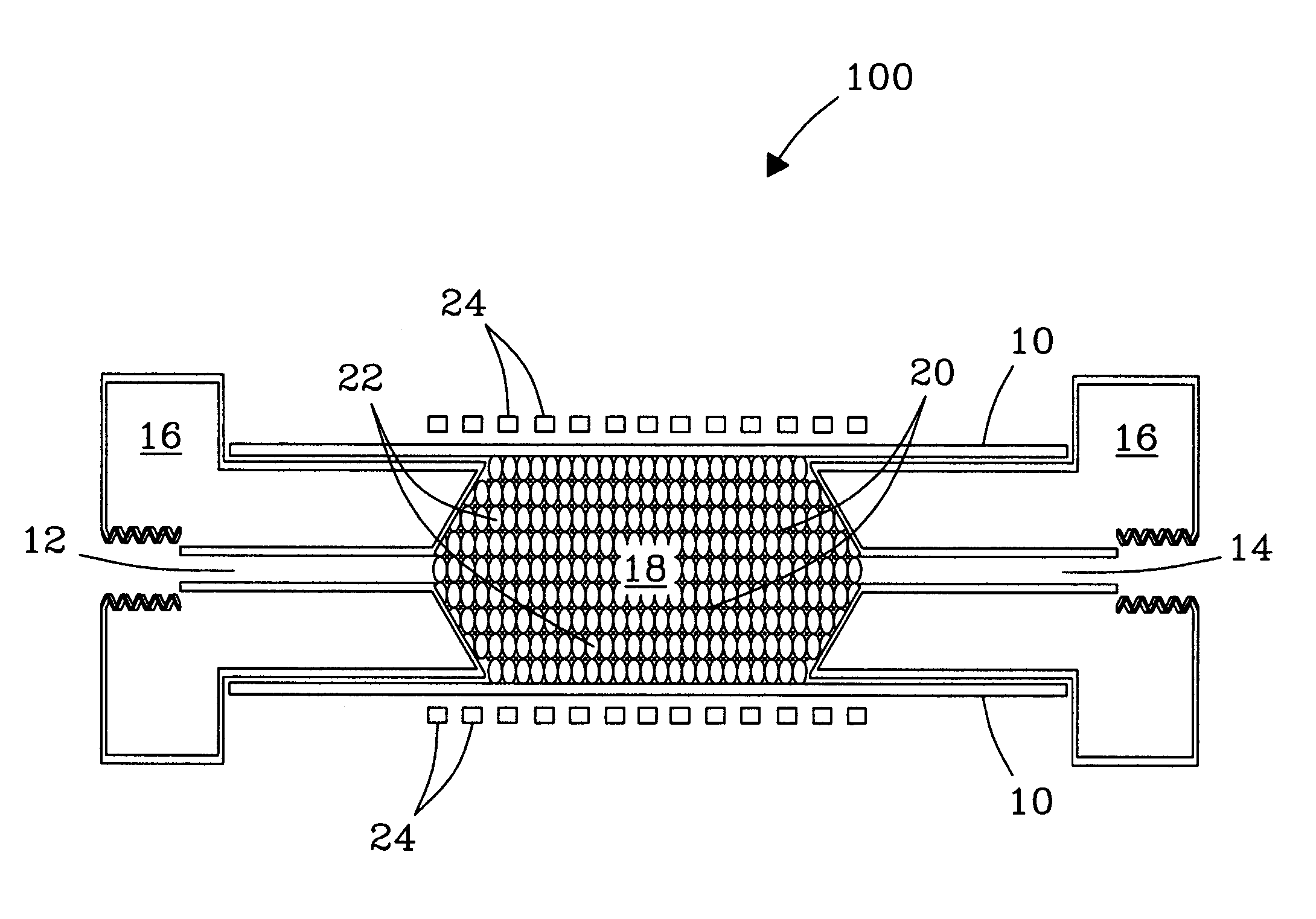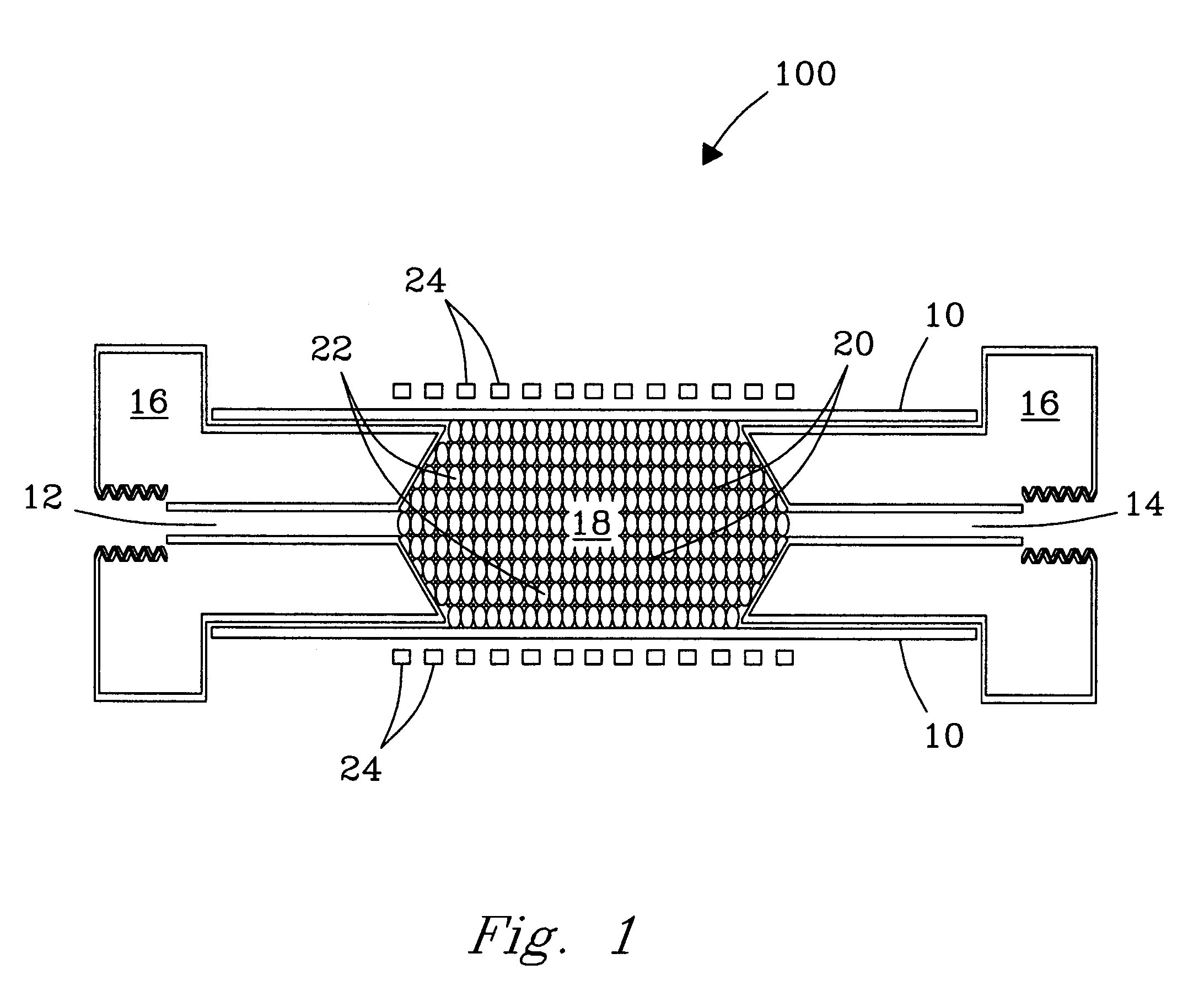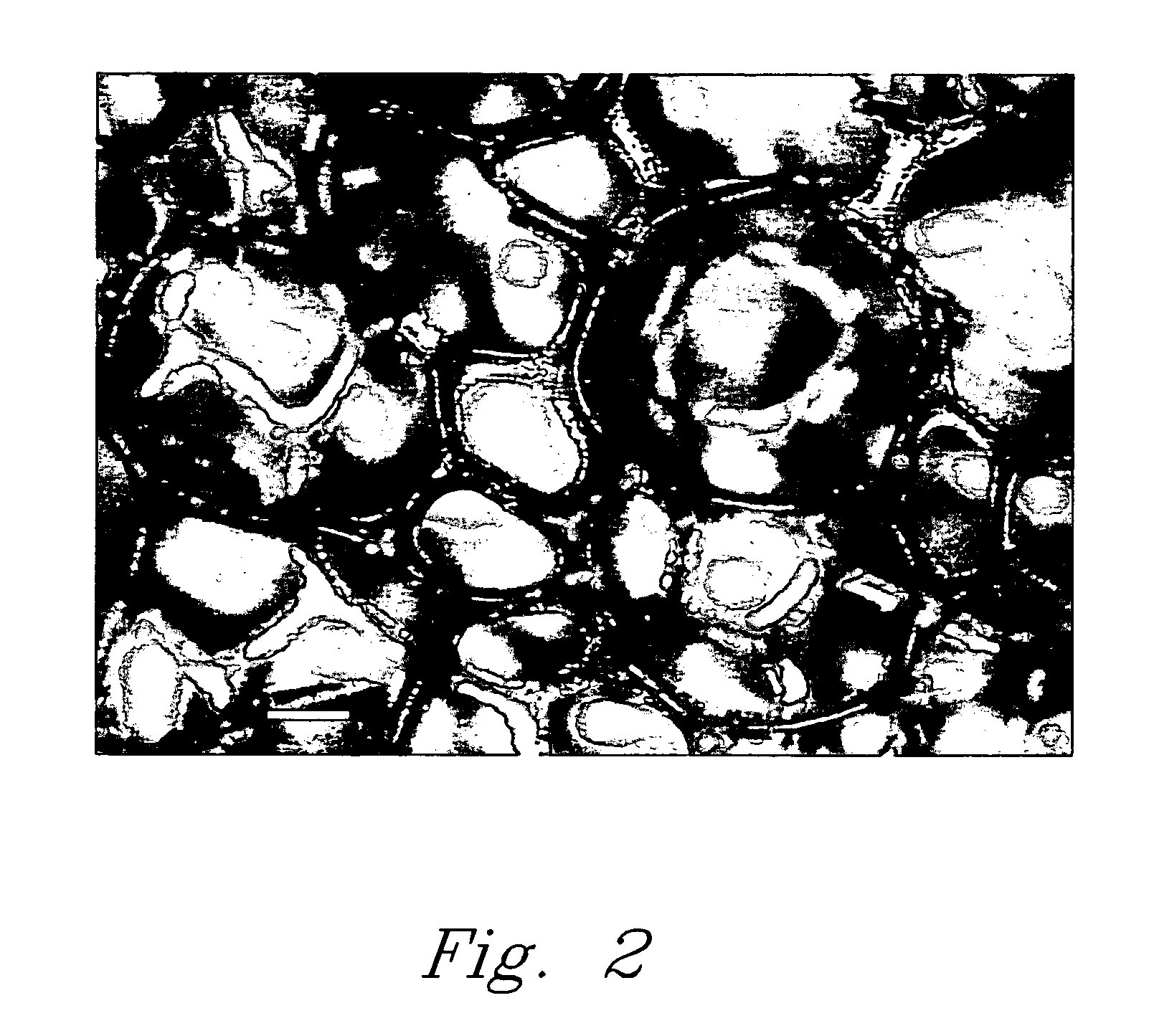Method and apparatus for concentrating vapors for analysis
a gaseous vapor and analysis method technology, applied in the field of gaseous vapor concentration methods and apparatuses for analysis, can solve the problems of poor separation and resolution of individual vapors, degrade the desired performance of a preconcentrator, poor heat conductors, etc., and achieves a sharper tall peak in the resulting vapor concentration, high thermal conductivity, and increased heating rate of the center
- Summary
- Abstract
- Description
- Claims
- Application Information
AI Technical Summary
Benefits of technology
Problems solved by technology
Method used
Image
Examples
example 1
Preconcentrators with and without Metal Foam Core
[0079]Example 1 describes thermal characteristics of a preconcentrator containing metal foam 20 in core 18 of preconcentrator 100 in comparison to one lacking metal foam, which demonstrates that the metal foam improves thermal conductivity and thermal uniformity in the sorbent bed. In addition, it has been observed in vapor desorption tests that preconcentrators without metal foam lead to broader more overlapped peaks from vapor mixtures. Thus the metal foam also provides narrower better resolved vapor desorption peaks.
[0080]Experimental. Preconcentrator 100 with core 18 of metal foam 20 was packed with ˜25 mg of 60 / 80 mesh Tenax-TA™ sorbent (Supelco, St. Louis, Mo., USA) 22. Metal foam 20 used was a porous nickel foam (e.g., Ampormat 200 series, Astro Met Inc., Cincinnati, Ohio, USA) having a pore density of about 60 pores per inch in sheets. Preconcentrators prepared without metal foam 20 in the core were also prepared for compariso...
example 2
Vapor Separation of a Tertiary Mixture as a function of Heating Ramp Rate
[0083]Example 2 describes test results using preconcentrator 100 containing metal foam for vapor separation of a tertiary mixture of MEK-TOL-DMMP vapors. Peak separation and resolution were demonstrated and measured by varying the controlled thermal ramp rate of preconcentrator 100 as described herein.
[0084]Experimental. Preconcentrator 100 was placed in series between a vapor generator 202 (e.g., VBS system) and a single FPW sensor 204 acting as detector as described previously. Ternary mixtures of vapors were generated consisting of methyl ethyl ketone (MEK), toluene (TOL), and dimethyl methylphosphonate (DMMP), obtained from Aldrich (St. Louis, Mo., USA), representing vapors having different functionalities and volatility in order to demonstrate varying desorption rates from preconcentrator 100. Vapor concentrations of the tertiary mixture of vapors were 2230 mg / m3 MEK, 220 mg / m3 TOL, and 110 mg / m3 DMMP, res...
example 3
Preconcentration of Varying Vapor Concentration in a Tertiary Mixture
[0086]Example 3 describes results from vapor separation tests using preconcentrator 100 involving tertiary mixtures of MEK-TOL-DMMP vapors at constant MEK-TOL with varying concentrations of DMMP. Tests on binary mixtures of MEK-TOL and TOL-DMMP were also conducted for comparison purposes.
[0087]Experimental. Ternary mixtures of vapors were generated consisting of methyl ethyl ketone (MEK), toluene (TOL), and dimethyl methylphosphonate (DMMP) as described in Example 2. Concentrations were held constant for MEK and TOL at 2230 mg / m3 and 220 mg / m3, respectively. DMMP vapor concentrations were varied, ranging from 6.9, 13.7, 27.4, 54.8, and 110 mg / m3. The MEK-TOL-DMMP vapor mixtures were preconcentrated using preconcentrator 100 as described in Example 2. FIG. 10 plots the response profiles at a single thermal ramp rate of 2.5° C. / sec (60 sec ramp). Ramp temperature is overlaid, referenced on the right hand Y-axis.
[0088...
PUM
| Property | Measurement | Unit |
|---|---|---|
| mean pore diameter | aaaaa | aaaaa |
| grain size | aaaaa | aaaaa |
| pore size | aaaaa | aaaaa |
Abstract
Description
Claims
Application Information
 Login to View More
Login to View More - R&D
- Intellectual Property
- Life Sciences
- Materials
- Tech Scout
- Unparalleled Data Quality
- Higher Quality Content
- 60% Fewer Hallucinations
Browse by: Latest US Patents, China's latest patents, Technical Efficacy Thesaurus, Application Domain, Technology Topic, Popular Technical Reports.
© 2025 PatSnap. All rights reserved.Legal|Privacy policy|Modern Slavery Act Transparency Statement|Sitemap|About US| Contact US: help@patsnap.com



